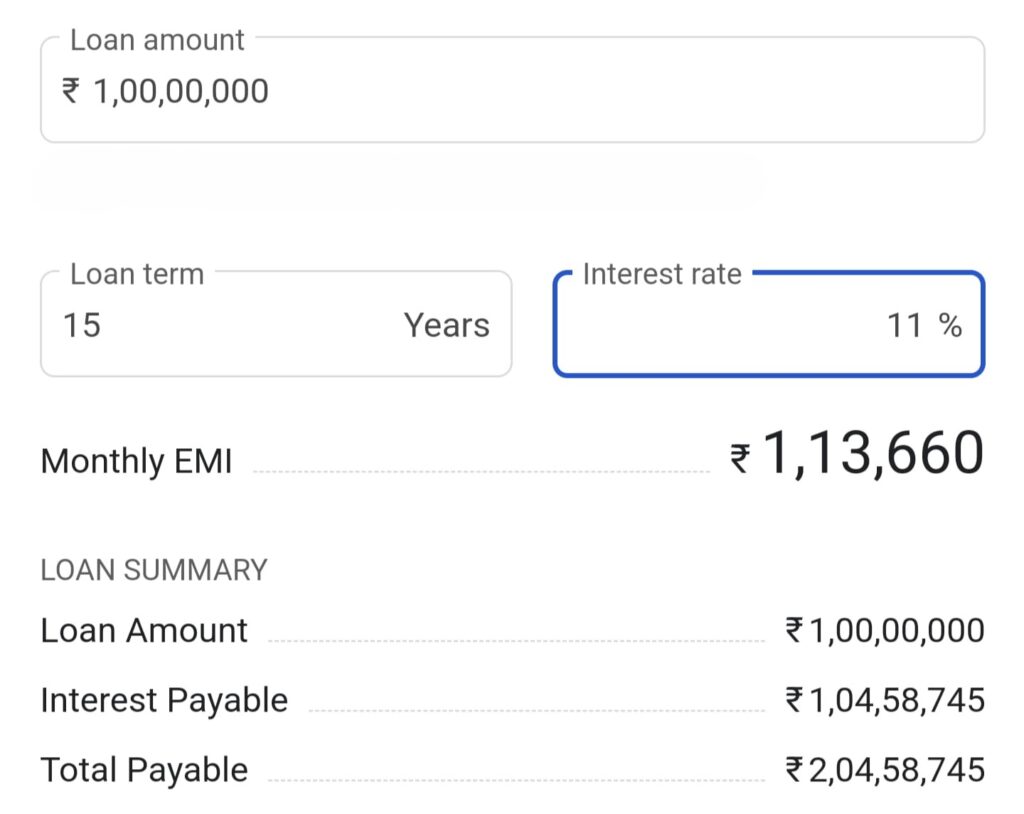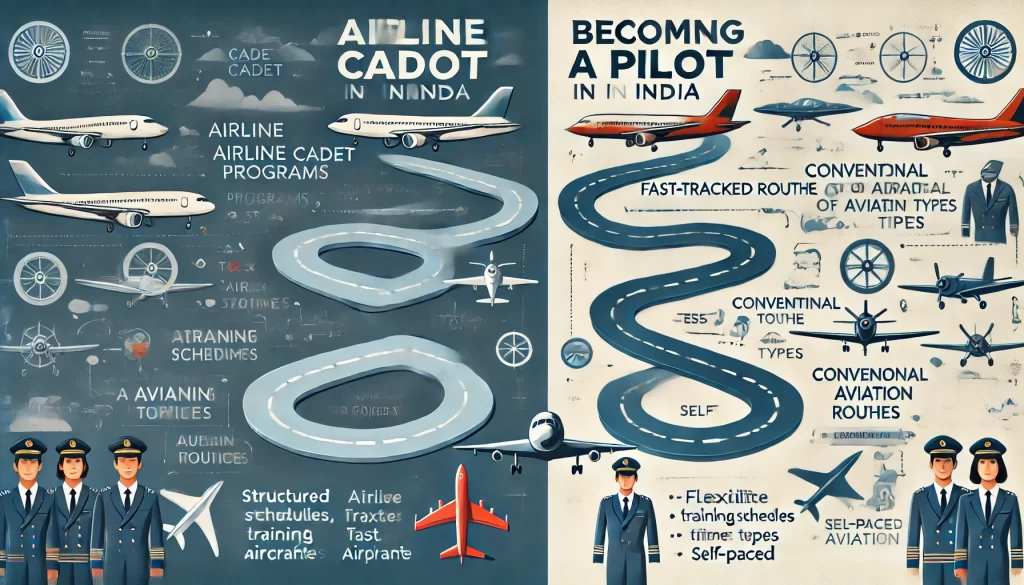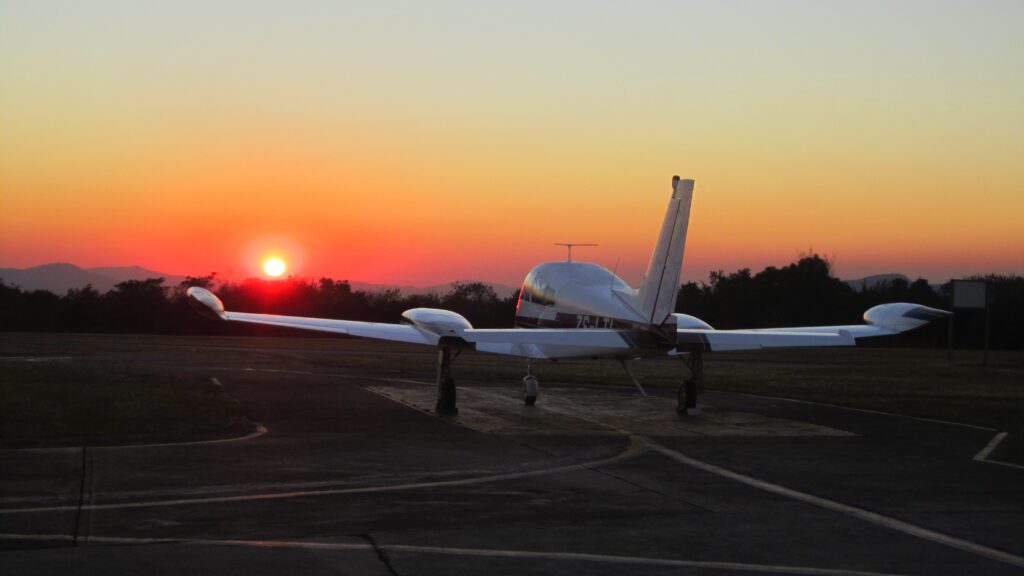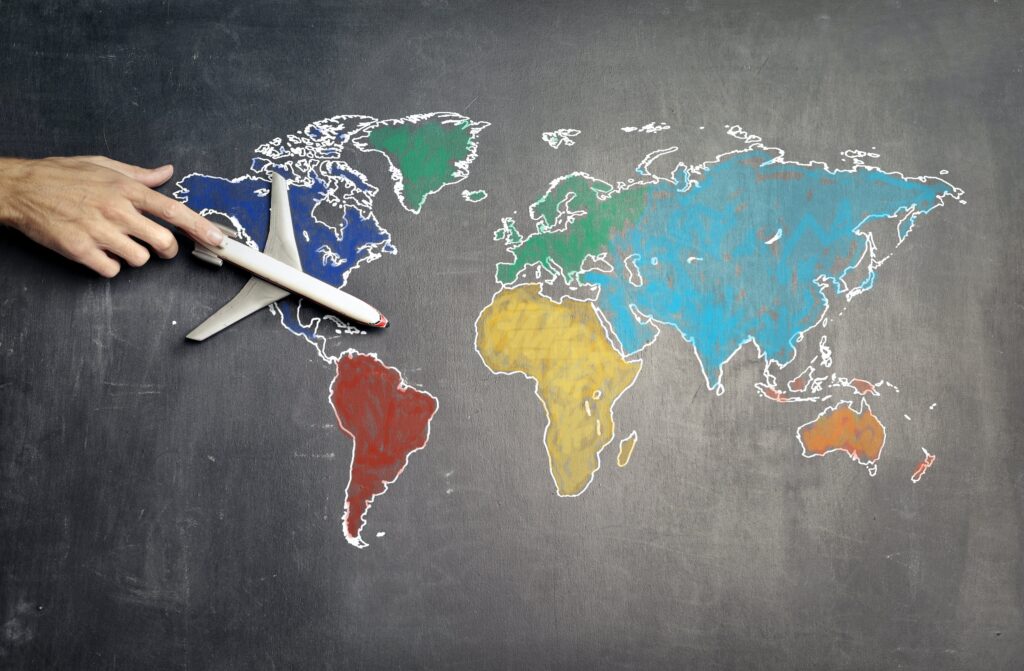The Cadet Pilot Program or the Conventional route? is a highly asked question and I’ve tried to stay away from it. It’s because of its highly controversial nature along with the fact that I have a non conventional way of thinking. However, I was reminded recently that the purpose of this website was to help people by having a non conventional approach.
So, starting this blog with this DISCLAIMER that these are my personal thoughts and that a difference of opinion is always welcome. Let’s dive in and see what considerations should you look at before deciding on a very definitive career path to become a pilot.
- Key Differences Between Cadet Pilot Programs and Conventional Pilot Training
- Costs Comparison
- Financial Impact
- Time Commitments
- Job Assurance and Career Opportunities
- Admission Requirements and Selection Processes
- Conclusion
Key Differences Between Cadet Pilot Programs and Conventional Pilot Training
Cadet Pilot Programs are airline-specific, offering a structured curriculum tailored to the needs of a particular airline. They provide a clear training path with the potential for direct employment. It’s important to note that a job is not guaranteed as training can be terminated at any point due to several reasons. There’s often a waiting period between the end of training and starting work with the airline.
Conventional Training, on the other hand, is more flexible. Allowing students to choose their flight schools and progress at their own pace. This option offers broader experience across different aircraft types. With pilots needing to apply to various companies after completing their training for jobs. Click here if you want to find a good flight school.
Costs Comparison
-
- Cadet Pilot Program is generally more expensive. Training costs ranging from ₹80 lakhs to ₹1.5 crore depending on the airline and whether training is conducted domestically or abroad. This high cost includes tuition, flight hours, type rating and living expenses during the program.
-
- On the other hand, Conventional Pilot Training is somewhat more affordable, costing between ₹40 to ₹75 lakhs. This cost is influenced by the location of the flight school, the length of the training, and additional expenses like type rating. While the conventional route may seem less expensive, there are still significant risks associated with obtaining a CPL, as pilots must seek employment independently. Click here if you want to find a good flight school.
-
- For both types of training payments can be made in part as training progresses. This may help ease some financial burden. Airlines may ask for signed cheques which are cashed with progress of training.
Financial Impact
In our education system, financial literacy is often overlooked, yet it is crucial when making significant investments like pilot training. Let’s discuss the financial implications of both pathways to help you make an informed decision.
For the sake of this section, let’s assume you will be relying on loans to fund your pilot training. If you happen to have ₹1 crore available in savings, this section may not apply to you, and you can skip ahead.
Now, consider you plan to fund the cadet pilot program with a loan of ₹1 crore. Educational loans in India typically offer a maximum of ₹7.5 lakhs without collateral, and any amount above that will require a collateral. The average Rate of Interest on such loans is around 11%. In the case of a personal loan, this rate can be as high as 14%. For this example, we’ll assume a rate of 11% and calculate the repayment based on the maximum tenure of 15 years for an education loan. You can google an EMI calculator and play with the numbers.

Using an EMI calculator, the monthly repayment for a ₹1 crore loan at 11% interest over 15 years is ₹1,13,660. Over the course of the loan, you would not only repay the principal ₹1 crore, but also ₹1,04,58,745 in interest, bringing the total repayment to ₹2,04,58,745. The key question is: Is this investment worth it?
Keep in mind this is just the loan amount and not the total training cost.
For the conventional training route, let’s assume a loan of ₹50 lakhs at the same interest rate and tenure. The EMI would be ₹56,830, and the total interest repaid would amount to ₹52,29,372, making the total repayment ₹1,02,29,372. Again, this raises the question: Is the conventional route more financially viable?
How many years until you can start saving for a financially secure future ?
When a cadet, after the waiting period, OR a fresh CPL holder from a conventional background with a type rating finally joins an airline – the starting salary is less than ₹1 lakh. It is very likely that the airline will give you a base that is not your hometown, so you will have housing expenses. You will pay rent, electricity, internet, wash your clothes, cook food – basically all the essentials. Then you have non essential expenses – because you want to live a certain lifestyle. Then you still have to pay the EMI. After all this is when you can think about saving and recovering your investment.
Click Here to read my blog about total cost and recovery periods in detail.
Time Commitments
-
- Cadet Pilot Programs generally take about 18 to 24 months from the start of training to obtaining a Commercial Pilot License (CPL). The training schedule is fixed, with the aim of efficiently preparing cadets for airline employment. However, even after receiving their CPL, cadets often face a waiting period before being inducted into the airline, depending on market demand and internal airline requirements. This means that the total time to employment may vary, and during this gap, cadets are not paid
-
- In contrast, Conventional Training offers more flexibility, typically taking 1 to 2 years depending on the individual’s pace, the flight school’s location and ability to provide quick paced training and the completion of the necessary exams. Since this route isn’t tied to any specific airline, there’s more freedom to look for employment at any company. If you can secure a job after completion of CPL then the difference in time may be well worth the risk.
Flight schools around the world have different durations for training. In India the typical duration is 2-3 years but there is no hassle of conversion of licence. If you choose to go abroad, you could have a CPL in less than 12 months, but you will have to spend time in conversion of the CPL. But is this time difference worth it? The sooner you have a CPL the sooner your are employable!
Click here to read my blog on foreign licence conversion.
Job Assurance and Career Opportunities
-
- Cadet Pilot Programs offer a significant advantage in terms of job potential. Upon successful completion, cadets typically receive a Letter of Intent (LOI) from the airline, which indicates a potential offer of employment. Even with an LOI, there is often a waiting period before joining the airline, which can vary based on demand, operational needs or economic conditions. During this waiting period, cadets do not receive a salary and airlines do not allow parallel employment for any flying or income, adding financial pressure.
It is important to understand here that even if this waiting period is just 1 month today, it does not mean it will be the same by the time you complete your CPL. A lot can change overnight, such as shifts in the aviation industry, economic downturns or changes in airline demand which could extend this waiting period significantly and waiting periods can go upto 2-3 years as history has shown. This introduces a significant risk to consider, as prolonged waiting times can delay your career start and increase the financial burden of managing loan repayments without a stable income.
Click here to read my full story
It is also important to note that a cadet’s training can be terminated at any stage if they fail to meet the airline’s required performance standards. Typically, cadets are given two opportunities to pass the necessary examinations. However, inappropriate attitudes, behavioral issues (which are the most common), or involvement in illegal activities are also grounds for termination.
On the other hand, once a cadet successfully completes the training, there is a level of job security, as the airline is likely to hire you. This means you won’t need to actively search for employment, and you can begin your career in the cockpit of an airline.
-
- Conventional Training, on the other hand, does not offer any direct job placement upon receiving a CPL. Pilots must apply independently to airlines, private charter companies or other aviation sectors. While this may present more uncertainty, it allows for greater flexibility to seek opportunities across different airlines or even internationally. However, job hunting can take time and pilots may face a more competitive job search due to the influx of pilots from cadet pilot programs.
What is important here is that you are open for employment not only within the airline industry but anywhere. You can explore a variety of roles such as private charter pilot, instructor jobs, air ambulance services, cargo companies, survey companies, pilot for the airports authority of India, joining the coast guard, non scheduled industry, etc within India. If you are open to jobs internationally then jobs like bush pilot, crop spraying, sky diving, etc can provide a great place to start and add value to your resume.
Financially speaking, you could start earning right after completing your CPL with one of these jobs. This not only helps you repay the loans but you start gaining experience. That is also money earned and experience gained as opposed to just waiting your turn in the cadet program. Some of these jobs even pay a lot more than an airline and offer an easier or more relaxed lifestyle. But the risk is that you will have to look and hunt for the job, which may seem easier than it looks, since these kind of jobs are usually not advertised.
Once you gain enough experience then moving to an airline becomes far easier. At this point the airline may even pay for your type rating, reducing your financial burden. At this point, you will join the airline at a higher pay bracket as compared to the cadet pilot.
Common To Both Training Methods
If your goal is to only work for an airline and you are not open to other opportunities then you should also consider the reality of airline hiring. Now I know, and I have also mentioned in an earlier blog that – Akasa, Indigo and Air India alone have an order of 1120 Aircraft (as of 2024), and more by other companies too. But have we considered when they are to arrive ? All these aircrafts will be delivered over a period of 10 years as per the initial deal. Out of these a large percentage of aircraft will be used for replacement for older aircrafts, for which airlines already have pilots.
Consider the number of CPLs being issued by DGCA every year to the number of fresh pilots airlines are hiring in the same year. DGCA has issued 1,342 CPLs in 2024, 1,622 in 2023 and 1,165 in 2022. That makes a total of 4,129 in just the last 3 years. Have all the airlines, put together, hired so many pilots in the same period ?
Let’s also consider what’s happening as I write this update in May 2025. Trump has imposed high tariffs on most countries, possibly starting a tariff war. This will make raw material, manufacturing, etc of the aircraft more expensive and while negotiations might be underway, we have to see that deals that were made on a certain price earlier may no longer be profitable for aircraft manufactures. Therefore re-negotiations may be required and could possibly be a reason for recent delay of aircraft deliveries.
Continuing on the update – As of April all airlines have stopped hiring including IndiGo. Cadet AND conventional. This was an overnight decision, at least for us normal people. Only upper management would know the exact reasons for this but I want to speculate just for your benefit. Everyone knows about the ongoing wars at this time. Most of the titanium used in aircraft manufacturing, comes from Russia. With the sanctions enforced, this affects the pace of manufacturing and deliveries of aircraft and engines.
Luck and timing play a very big role in pilot hiring. Very few people are fortunate enough to be able to get that airline job right out of flight school. So whether you choose the cadet pilot program or the conventional method, you should in fact expect a period of unemployment and plan for it, especially financially.
Admission Requirements and Selection Processes
The Cadet Pilot Programs have a highly competitive and rigorous selection process. Airlines will have their specific requirement posted on their website which is where you have to apply from. The frequency depends upon airline’s requirements. So keep an eye on the airline’s website. Below is general list of requirements :
-
- Education: A minimum of 10+2 with Physics and Mathematics.
-
- Age: Applicants must be between 18 and 32 years old, with variations depending on the airline.
-
- Medical: A DGCA Class 2 medical certificate is mandatory.
-
- Selection Tests: Candidates undergo multiple rounds of assessments including aptitude tests, psychometric evaluations, psychomotor tests, group discussion and personal interviews. Keep in mind that you only get 2 attempts to get selected and there is a cooling period between attempts.
-
- DGCA CPL Exams : It is mandatory only for some of the flight schools to complete these before applying. For the other flight schools having passed these can help with the interview process, but as this is not mandatory, the airline will put you through ground school.
This rigorous process ensures that only the most qualified candidates are selected, but it also adds pressure on aspiring pilots to perform well across various stages of evaluation. Click here to read my blog on airline interview process.
Conventional Training, by comparison, has more lenient entry requirements:
-
- Education: The same 10+2 with Physics and Math requirement applies and that’s it !
Flight schools may have their own selection process, but it’s usually more flexible and focused on medical fitness and academic performance.
Conclusion
In conclusion, choosing between a cadet pilot program and the conventional route depends on personal preferences, financial capabilities and career goals. Cadet pilot programs provide structured training and a potential path to airline employment but come with high costs and a Letter Of Intent. The conventional route offers more flexibility and broader experience being very pocket friendly but requires more effort in job hunting post training.
Both path ways come with their own levels of risk and financial obligations. SO, there really isn’t a simple answer that will suit everybody, but just one that suits you as an individual. What works for you? How much risk can you take? How much financial liability can you take?
Remember that these answers are unique to you and only you can answer them. Do not rely on answers from others as they will not have to live with that decision. The money is yours, the risk is yours, so the decision has to be yours too. The more questions you answer now the better off you will be with the decision you make, as this one decision can make all the difference in your career as a pilot.
Click here if you are wondering if this is the right time to become a pilot
These are of course just my opinions based on my experiences and gained knowledge. Differences in opinion are welcome.





This was so so helpful, thankyou so much for the wonderful and detailed blog!
Sir it really means a lot to aviation aspirants like us and your blogs literally cleared all my doubts regarding aviation and i appreciate your time and efforts for it
The effort you put into your blogs is truly commendable and worth appreciating.
Hello Captain!
I would love to know how you reached the cockpit of a major airline after completing your CPL in the conventional way.
I too belong from a very middle class family and it is nearly impossible for us to afford a cadet pilot program and hence the conventional way seems better financially. However, job hunting is really scaring me because I don’t wanna be taking up a loan of 50 Lakhs and being jobless.
Although I could work with cargo companies but after that how do I transition into major airlines ? Please guide me.
Hi, thanks for reaching out. This has been asked by many people and I am working on something that will answer your question. I will be publishing it in a few days, so check in soon to read about it.
Hello sir !
I had a question regarding ground school.
So currently I am pursuing my undergrad degree .As soon as I complete it, I am planning to join a cadet pilot program.
If I clear my dgca papers side by side during my undergrad degree.Will I save time on the ground classes and directly go for flying once I join the cadet pilot program.
Or do I have to compulsory take the ground
classes even if my dgca papers are cleared in the cadet pilot program.
Great question! Shows how detailed your thinking is. I feel the best answer to this you will get from the airline itself. Alirlines constantly change their policies so you have have to confirm with them at the time of your application.
Indigo has 9 FTOs . In Social Media when the cadet induction photos are shown, you can see 15+ cadets at an average for these events. This means overall there must be 15×9 = 135 cadets getting inducted for training. Also understand the induction is more than once an year . So annually there could be 250+ cadets. Is there job opportunity at that scale. I mean do we have any data on how many cadets get selected every year & how many actually end up being an Indigo pilot. At an average what is the waiting period nowadays for a cadet post training completion.
although your basic math is right, you need more understanding on how the industry works. everyone who completes the cadet program, will end up working at the company. the real question, one that you have also pointed out is – when? The rate of induction is always different at different times. It really depends upon the need of the company. I urge you to read this blog of mine that touches the topic about hiring practices https://abdutunfiltered.com/want-to-become-a-pilot-in-2025/
Firstly, I want to thank you for all the articles over time as they have helped me a lot.
I am a 29 year old guy doing a career switch as I can now finance my airline training. I am more inclined towards the cadet program as age may become a factor if I go towards the conventional path. So I have to choose between the two pills- waiting for job with a loi in hand or going through the process of hiring with a cpl. Which seems wiser in your generous opinion?
Hi sir
I have a friend, who’s a conventional pilot with a completed TR and is currently waiting for job opportunities. Any thoughts on what might be the best path for him? Thanks!”
Hi, you have read the costs associated with both the pills, so if you can afford it then, keeping your age in mind, it would be better to go with the cadet program. Of course at the end of the day it is you who has to live with the decision made.